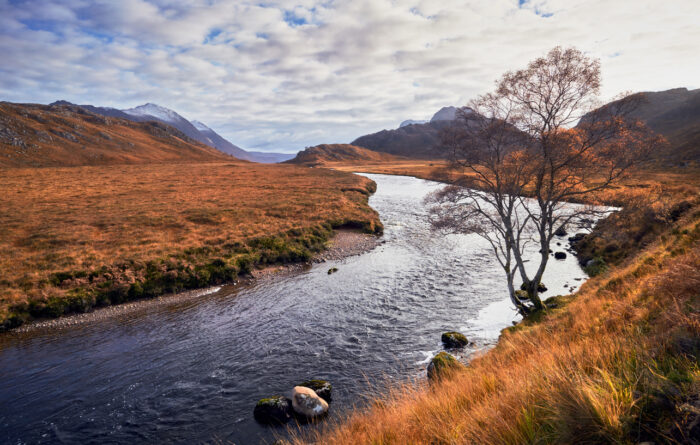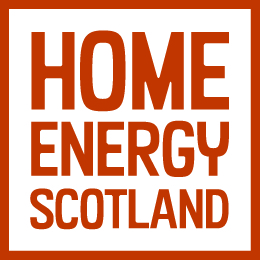Hyrdoelectric energy
The power of flowing water can generate electrical energy. If you live near a river or stream, hydropower may be able to cover your home’s electricity needs.

Hydropower for your home (called small or micro hydropower) uses a river or stream as an energy source. This is known as ‘run of river’ hydropower. It works by channelling some water from the river along a different path. The diverted water turns a turbine. This turbine powers a generator, which produces electricity.
Advantages of hydroelectric energy
- It saves money. Hydro energy could take care of your home’s electricity needs. This means you won’t need to buy electricity from the National Grid.
- It’s reliable. The river doesn’t stop running, so hydroelectric power is generated constantly.
- It’s green energy. The electricity from hydropower is renewable energy.
- It’s an off-grid solution. A hydroelectric power system often costs less than connecting your home to the electricity grid.
Disadvantages of hydroelectric energy
- It’s very site-specific. Besides needing a water source, there are other boxes to tick in terms of suitability. We cover these in more detail below.
- The cost. Prices vary depending on the location and the size of the system. Hydroelectric systems are usually one of the more expensive renewable technologies.
Is my home right for hydroelectric energy?
There are a few things to think about when looking into hydropower for your home:
The nearby river or stream needs the right conditions to produce hydroelectric power. It must have a good level of both ‘head’ and ‘flow’.
Head
All streams and rivers flow downhill. This means that the water is constantly falling. The distance it falls is known as the ‘head’. It’s measured in meters. If the head isn’t high enough, it won’t generate much hydro energy.
Flow
The flow is a measure of how much water is passing by. It’s measured in m3/s (meters-cubed per second). It’s important to look at the flow rate over the course of a full year. This is to avoid only measuring the flow when the river is full. Taking an average will give a better idea of how much hydroelectric energy your system will generate.
A hydro energy system will need:
- Sign-off from the Scottish Environmental Protection Agency (SEPA). Hydroelectric power involves diverting some water from the river to your turbine. SEPA can tell you how much you’re allowed to divert. They’ll then issue an abstraction license to give you the go ahead. SEPA’s job is to make sure that the river’s natural state is disturbed as little as possible
- Planning and building warrants. You will need to get planning permission from your local authority. You can also check with them whether you’ll need a building warrant. If there are other agencies you need to speak to, the Planning Office will let you know
If your hydroelectric system is being connected to the electricity grid, you’ll need to get permission from your Distribution Network Operator (DNO). The DNO is responsible for the maintenance and safety of the grid. They’ll ask to check the paperwork for your hydro energy system.
Is hydroelectric energy renewable?
Hydroelectric power makes use of the water cycle, which is powered by the sun. The water cycle is continuous. It never runs out.
All the hydro energy produced comes from the flow of water. There’s no extra energy needed to run the system, so no need to burn fossil fuels to provide this.
This means that the electricity generated by hydropower is renewable energy.
Can I sell hydro power to the electricity grid?
If your home is connected to the national electricity grid, you can sell your hydroelectric power to an energy supplier. Energy suppliers buy hydropower through the Smart Export Guarantee (SEG) scheme. Take a look at our SEG guide for more information.
Can I use battery storage with hydroelectric power?
If your system is producing more hydro energy than your home is using, the excess can be stored in a battery. You can save this energy for when you need it. Our battery storage guide tells you all you need to know about home energy storage.
Is there any financial help for hydropower?
Home Energy Scotland offer an interest-free loan of up to £2,500 towards a hydro energy system. To find out more, you can call one of their energy advisors on 0808 808 2282. You can also contact Home Energy Scotland through their online form.

Changeworks delivers Home Energy Scotland in the south east and Highlands and Islands on behalf of the Scottish Government and Energy Saving Trust.
As well as providing free, impartial expert advice to thousands of people every month to help them to keep warm in their homes for less, they identify funding opportunities for households seeking to install energy efficiency measures.
For more information, give Home Energy Scotland a call on 0808 808 2282 or email and the team will be happy to help you.